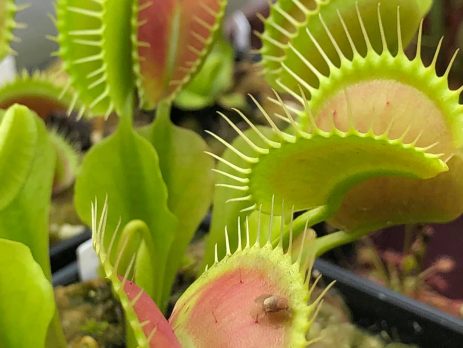Propagating a Venus Flytrap via the leaf cutting method
Propagating a Venus flytrap through leaf cutting is a common and effective method of asexual reproduction. Here are the steps to propagate a Venus flytrap through leaf cutting: Choose a healthy, mature leaf: Select a healthy, mature leaf from the Venus flytrap. Look for a leaf that is green, firm, and free of damage or disease. Cut the leaf: Use a sharp, sterile knife or pair of scissors to cut the leaf from the plant. Make sure to leave a...










